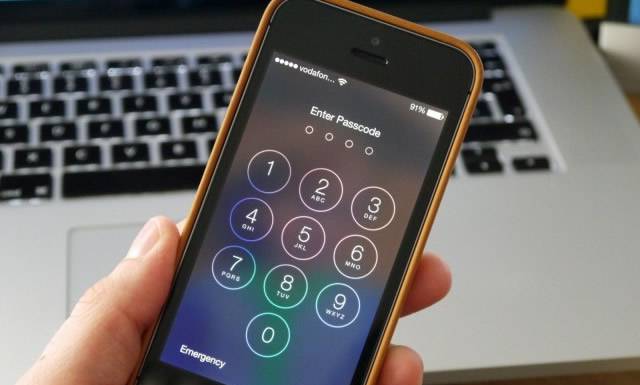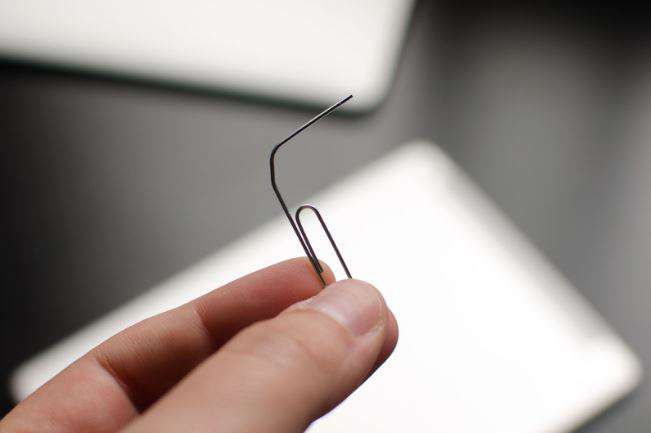Importing text messages from an iPhone to a Mac can be a useful task for a variety of reasons. Whether you need to back up important messages, transfer messages to a new device, or simply organize and manage your messages on your Mac, this process can come in handy. In this blog post, we will explore various methods to import text messages from an iPhone to a Mac, along with their pros and cons. By the end of this article, you will have a clear understanding of different approaches to achieve this task and be able to choose the one that suits your needs the best.
Why You Need to Import Text Messages From iPhone to Mac
- Back Up: Importing text messages to your Mac allows you to create a backup of your important messages. This can be particularly helpful in case you lose access to your iPhone or if you accidentally delete any messages.
- Transfer to New Device: If you are upgrading to a new iPhone or switching to a different smartphone, importing text messages to your Mac allows you to easily transfer and restore them on your new device.
- Organization and Management: Importing messages to your Mac provides a convenient way to organize and manage your messages. You can easily search for specific conversations, archive important messages, or delete unwanted ones.
Video Tutorial:
Part 1: Using iTunes
Using iTunes is one of the traditional methods to import text messages from an iPhone to a Mac. Follow the steps below to achieve this:
1. Connect your iPhone to your Mac using a USB cable.
2. Open iTunes on your Mac.
3. Select your iPhone from the list of devices in iTunes.
4. Click on the “Summary” tab.
5. Scroll down to the “Backups” section and click on “Back Up Now”.
6. Wait for iTunes to back up your iPhone.
7. Once the backup is complete, disconnect your iPhone from your Mac.
8. Open the Finder on your Mac.
9. Go to “Go” in the top menu and select “Go to Folder”.
10. Enter “~/Library/Application Support/MobileSync/Backup/” in the text field and click “Go”.
11. You will find a folder with a long name, which corresponds to the backup of your iPhone.
12. Open the folder and navigate to “3d0d7e5fb2ce288813306e4d4636395e047a3d28”.
13. This file contains your text messages. Copy it to your desired location on your Mac.
Pros:
| Pros | Cons |
|---|---|
| 1. iTunes is a well-known and reliable software for managing iOS devices. | 1. Requires a physical connection between your iPhone and Mac. |
| 2. Can back up not only text messages but also other data on your iPhone. | 2. The backup file may not be easily readable or searchable without third-party tools. |
| 3. Provides a comprehensive backup of your iPhone, including settings, apps, and media. | 3. The backup process can be time-consuming, especially for large backups. |
Part 2: Using iCloud Sync
If you have iCloud sync enabled on your iPhone and Mac, you can use this method to import text messages to your Mac. Here’s how:
1. On your iPhone, go to “Settings” and tap on your name at the top.
2. Tap on “iCloud” and make sure “Messages” is enabled.
3. On your Mac, go to “System Preferences”.
4. Click on “iCloud” and make sure the same Apple ID is signed in as your iPhone.
5. Enable the “Messages” option in iCloud preferences.
6. Wait for iCloud to sync your messages across your devices.
7. Open the “Messages” app on your Mac, and you will find your iPhone messages.
Pros:
| Pros | Cons |
|---|---|
| 1. Seamlessly syncs messages between your iPhone and Mac. | 1. Requires an active internet connection on both devices. |
| 2. Messages are automatically updated across devices, including read status and deletions. | 2. iCloud storage limitations may apply if you have a large number of messages. |
| 3. No need for physical connection or manual backups. | 3. Limited availability for older versions of iOS and macOS. |
Part 3: Using Third-Party Tools
There are several third-party tools available that specialize in importing text messages from an iPhone to a Mac. These tools often offer additional features and flexibility. Follow the steps below to import text messages using a popular third-party tool, iExplorer:
1. Download and install iExplorer on your Mac from the official website.
2. Connect your iPhone to your Mac using a USB cable.
3. Launch iExplorer and wait for it to detect your iPhone.
4. Click on the “Messages” icon in the iExplorer interface.
5. Select the conversations or messages you want to export.
6. Choose the export format (such as PDF, CSV, or TXT).
7. Select the destination folder on your Mac.
8. Click on the “Export Selected” button to start the export process.
Pros:
| Pros | Cons |
|---|---|
| 1. Offers more flexibility and customization options compared to built-in methods. | 1. Some third-party tools may require a paid license for full functionality. |
| 2. Can export messages to various file formats for easy management and analysis. | 2. Quality and reliability may vary depending on the chosen tool. |
| 3. Some tools provide additional features such as searching, filtering, and exporting attachments. | 3. Data security and privacy concerns may arise with third-party tools. |
Part 4: Using AirDrop
If you prefer a wireless method to import text messages, AirDrop can be a convenient option. AirDrop allows you to transfer files between Apple devices over Bluetooth and Wi-Fi. Here’s how to use AirDrop to import text messages from your iPhone to your Mac:
1. Make sure AirDrop is enabled on both your iPhone and Mac.
2. On your iPhone, open the “Messages” app.
3. Select the conversation or messages you want to import.
4. Tap on the sharing icon (usually represented by a square with an arrow pointing up).
5. In the sharing options, choose your Mac from the AirDrop section.
6. Accept the incoming message on your Mac to receive the selected messages.
Pros:
| Pros | Cons |
|---|---|
| 1. Enables wireless transfer of messages between your iPhone and Mac. | 1. Requires Bluetooth and Wi-Fi enabled on both devices. |
| 2. No need for cables or additional software. | 2. Limited to transferring a smaller number of messages at a time. |
| 3. Offers a quick and easy way to transfer important or specific messages. | 3. May not be suitable for large-scale backups or bulk transfers. |
What to Do If You Can’t Import Text Messages From iPhone to Mac
If you encounter difficulties in importing text messages using the methods mentioned above, there are alternative solutions available. Here are three alternatives you can try:
1. Email or Messaging Apps: If you only need to save or transfer specific text messages, you can use the “Share” or “Forward” options in the Messages app to send the messages to your email or another messaging app on your Mac. This method allows you to have a digital record of the messages without importing them directly.
2. Screenshots or Copy-Paste: If you have a few important messages, you can take screenshots on your iPhone and send them to your Mac using AirDrop or email. Alternatively, you can copy and paste the text of the messages into a document or note-taking app on your Mac.
3. Third-Party Apps: There are various third-party apps available on the App Store that specialize in transferring and managing iPhone messages on a Mac. These apps often provide additional features such as advanced search, filtering, and exporting options. Research and choose a reputable app that suits your requirements.
Bonus Tips
Here are three bonus tips to enhance your text message management on your Mac:
1. Use Search and Filtering: Most text messaging apps on Mac, including the built-in Messages app, offer search and filtering options. Utilize these features to quickly find specific conversations or keywords within your messages.
2. Create Folders or Labels: To further organize your messages, create folders or labels within your messaging app. You can categorize messages based on topics, contacts, or importance. This allows for better management and easier access to specific messages.
3. Regularly Back Up Your Mac: In addition to importing text messages from your iPhone, it is essential to regularly back up your Mac. This ensures that your messages, along with other important data, are safeguarded in case of any unforeseen circumstances or hardware failures.
The Bottom Line
Importing text messages from an iPhone to a Mac can be beneficial for backup, transfer, and management purposes. Whether you choose to use iTunes, iCloud sync, third-party tools, or AirDrop, each method comes with its own pros and cons. Consider your specific requirements, such as the number of messages, desired features, and convenience, when selecting the most suitable method for your needs. Remember to explore alternative solutions if you encounter difficulties, and follow the bonus tips to enhance your text message management on your Mac.
5 FAQs about Importing Text Messages From iPhone to Mac
Q1: Are the imported text messages on my Mac still accessible on my iPhone?
A: Yes, the imported text messages on your Mac remain accessible on your iPhone. The import process does not affect the original messages on your iPhone.
Q2: Can I import multimedia attachments such as photos or videos with the mentioned methods?
A: The mentioned methods primarily focus on importing text messages. However, most third-party tools provide options to export or back up media attachments along with your text messages.
Q3: How long does the iTunes backup process usually take?
A: The duration of the iTunes backup process depends on the size of your iPhone’s data and your computer’s performance. Larger backups with more data may take longer. It is recommended to connect your iPhone to a power source and ensure sufficient free space on your Mac before initiating the backup.
Q4: Are there any restrictions on the number of messages I can import using AirDrop?
A: AirDrop does not have a specific limit on the number of messages you can import. However, due to the nature of wireless transfer, it may not be ideal for bulk transfers or large-scale backups. It is recommended to utilize AirDrop for transferring specific or important messages.
Q5: Can I import messages from other messaging apps, such as WhatsApp or Facebook Messenger, using these methods?
A: The mentioned methods primarily focus on importing messages from the native Messages app on your iPhone. However, some third-party tools may offer additional support for popular messaging apps. It is advisable to explore the features and capabilities of the specific tool you are using for importing messages from other messaging apps.




